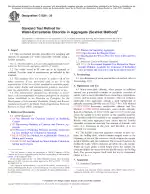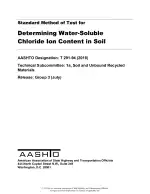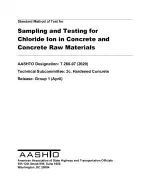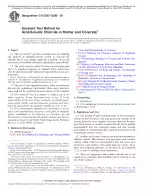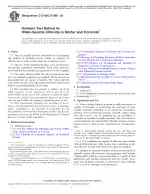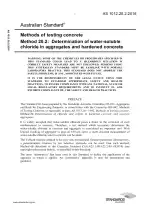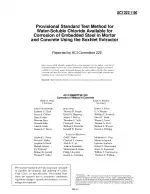ASTM C1524-20 PDF Download
Standard ENStandard Test Method for Water-Extractable Chloride in Aggregate (Soxhlet Method)
Also Known As:
ASTM C1524-20 is a standard test method that provides procedures for sampling and analyzing aggregates for water-extractable chloride using a Soxhlet extractor. Water-extractable chloride, when present in sufficient amounts, has the potential to initiate or accelerate corrosion of metals in contact with cementitious systems such as concrete or mortar. This test method is particularly applicable when aggregates have a high naturally occurring chloride background.
The test method involves the use of a Soxhlet extraction apparatus, which consists of three sections: the boiling flask, the extractor (containing the aggregate sample), and the condenser. Reagent water is added to the boiling flask, which is then boiled. The condensing water drips onto the sample in the extractor, and when it reaches a certain height, it is siphoned back to the boiling flask. This process is repeated until the test is terminated.
It is important to note that this test method differs from other methods such as Test Method C1152/C1152M and Test Method C1218/C1218M, which pulverize the sample to a fine powder or granular material before extraction. The Soxhlet method allows for the use of nonpulverized material. However, it has been observed that the Soxhlet procedure may extract only a minimal amount of chloride from certain aggregates, with most of it remaining in the rock and thus not available for corrosion.
| Descriptors | chloride content, water extraction, Soxhlet extractor,Aggregates,Extraction,Inorganic Matter Content,Laboratory Apparatus,Sampling |
| ICS Codes | 91.100.30 - Concrete and concrete products |
| Language(s) | English |
| File Size | 102.4 KB |

